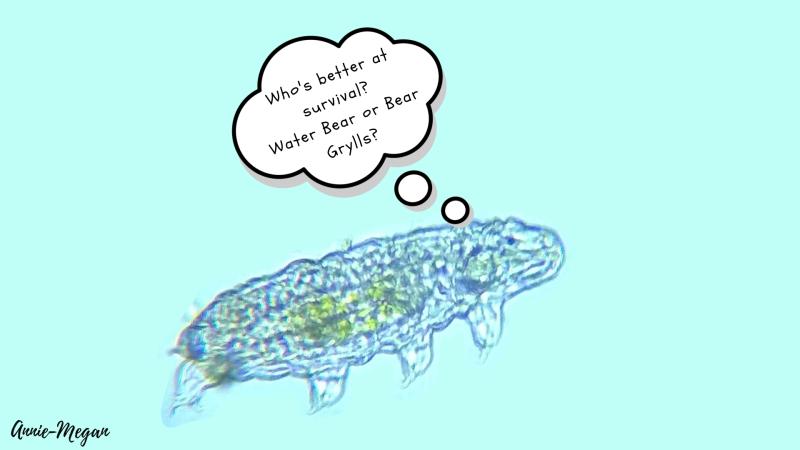
Water is essential in biochemical processes needed for the survival of living organisms. Humans can survive without water for about 2-7 days. However, there exists an animal so resilient that it can withstand water scarcity for decades! Tardigrades, also called water bears, are small aquatic animals that are about 1.2 mm long with a head and four pairs of clawed legs, looking like cute little gummy bears.
Tardigrades can survive more than just dehydration; they can endure from the hottest (150°C) to the coldest environment (-272°C ) on Earth. From radiation to the vacuum of outer space, they survive everything! Hence, they were rumoured to be an extra-terrestrial species. However, scientists have studied more than 1100 species confirming their origin & evolution on Earth.
So, how do the tardigrades survive dehydration? It is through a process called anhydrobiosis, which literally means ' life without water'. During periods of water scarcity, they enter into a 'tun' state, curling up into an armoured ball, pulling their head and legs inside their body until rehydrated to live again. During this phase, they synthesise a unique protein to form a matrix called 'biological glass'. It prevents damage of sensitive molecules like DNA, proteins, and membranes by replacing lost water and fixing them in their position.
Tardigrades are so hardy that they can live almost everywhere, including deserts, oceans, rainforests, polar ice caps, and mountain peaks. You can also find them in parks, forests, and even in the backyard of your house! However, you have to look around with a microscope. They are also essential players of the food chain as they feed on algae, moss, rotifers, nematodes, and sometimes, smaller tardigrades.
Scientists are now curious to understand more about tardigrades as their survival mechanism could be utilised to stabilise vaccines, modify crops to withstand the Earth’s changing climate, and improve our lifespan. A few experiments on plant and human cells are underway. Understanding their prolonged survival in outer space might unlock a new dimension in our quest for exploring the cosmos.





